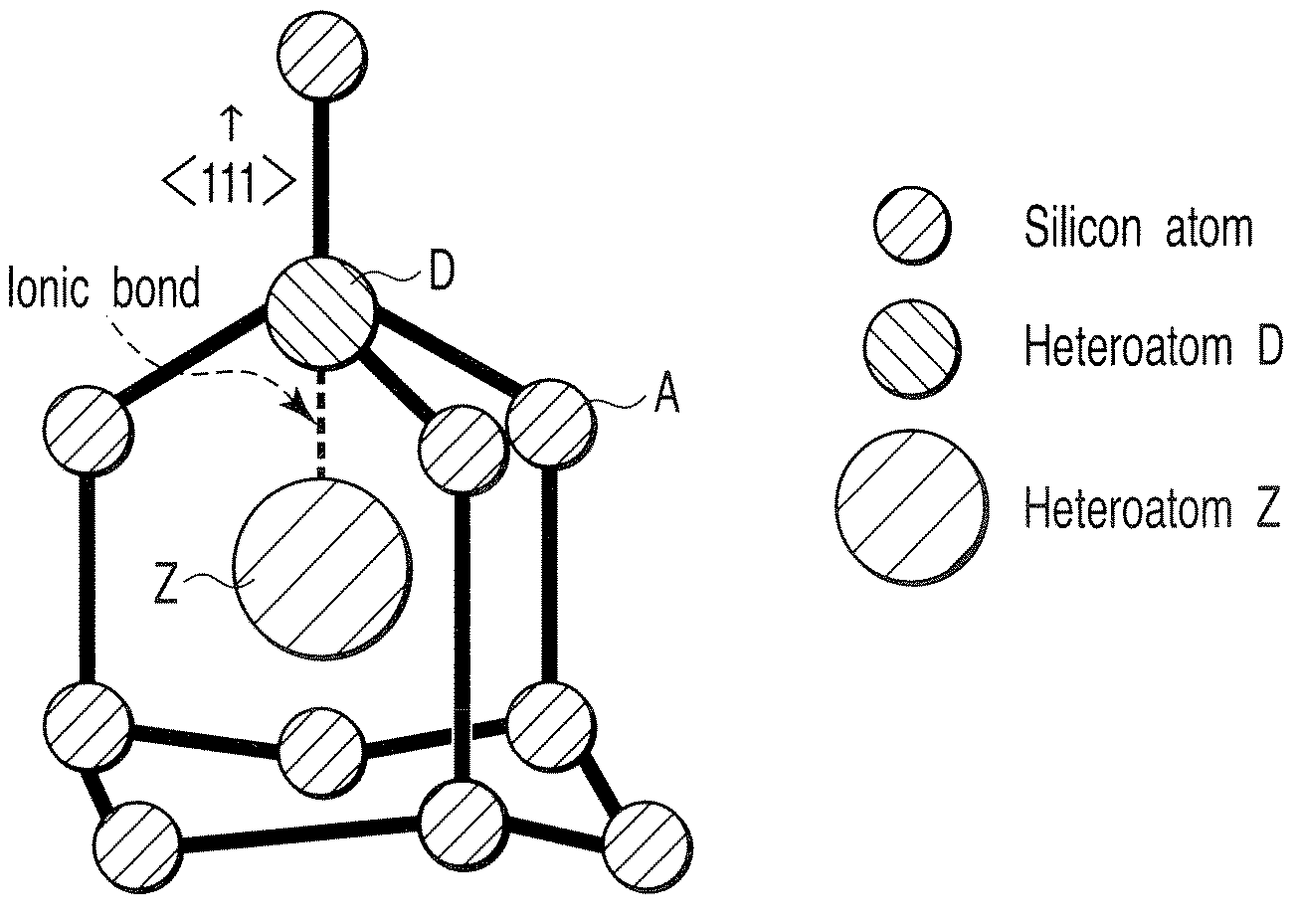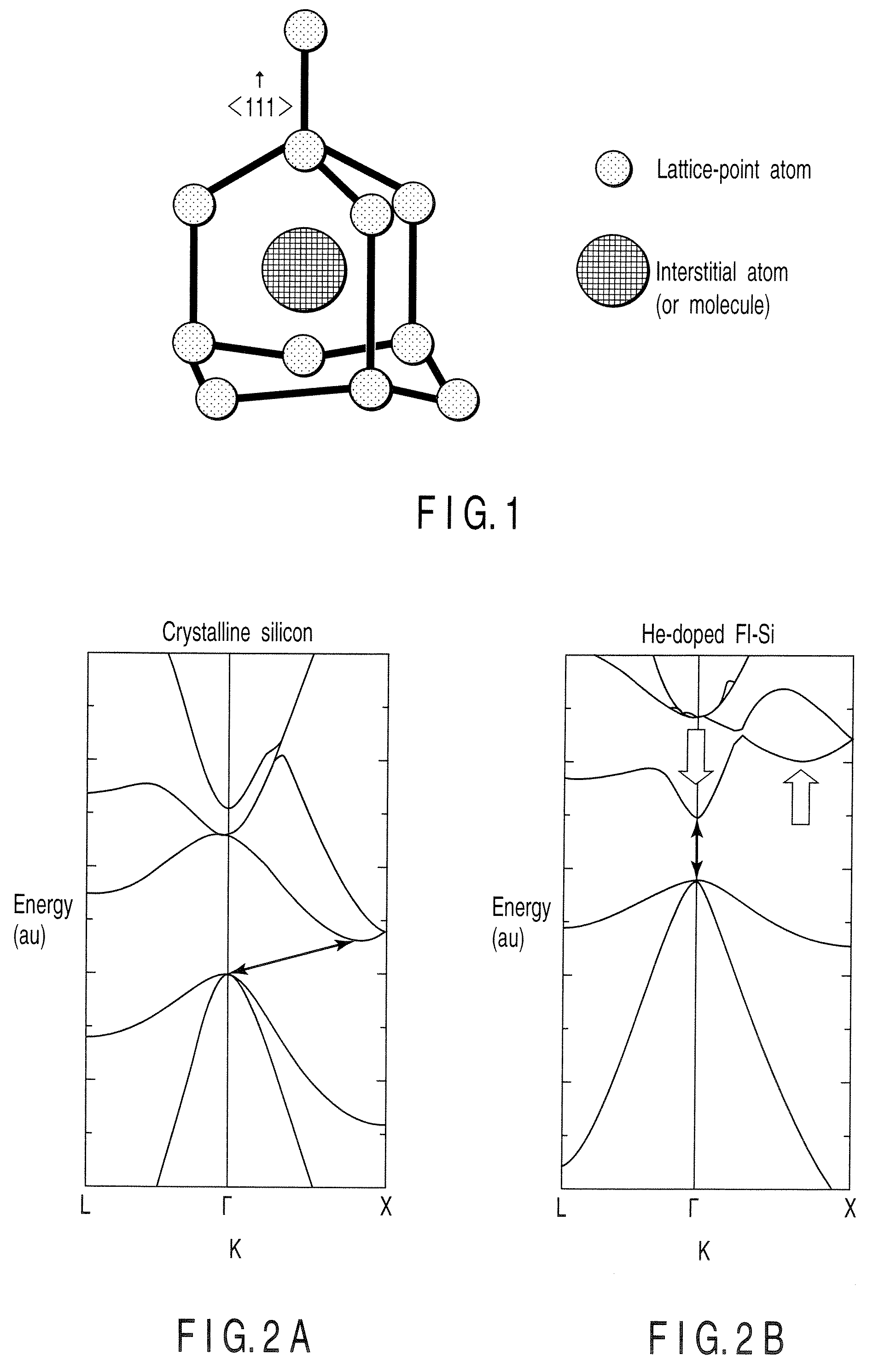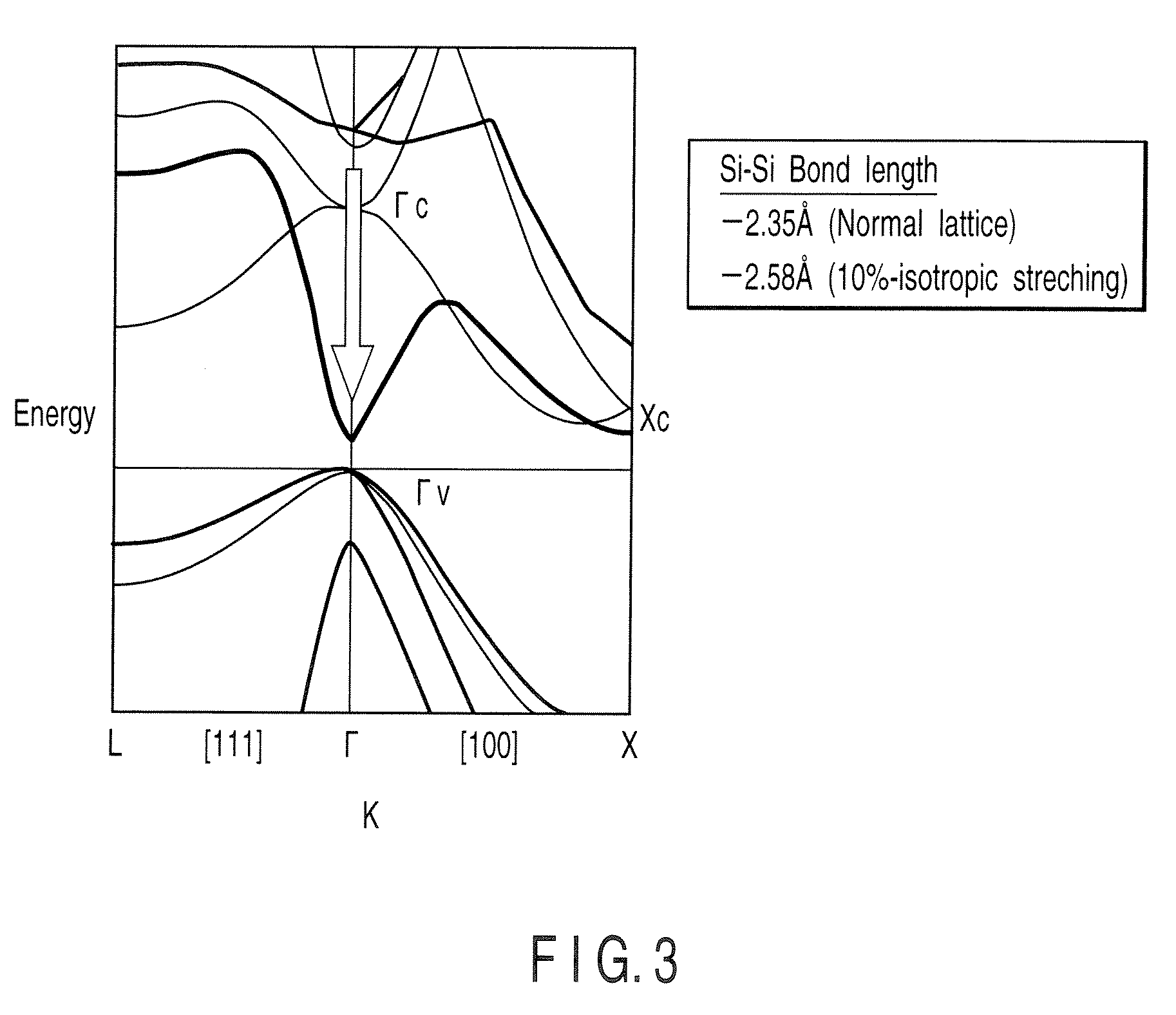Light emitting device with filled tetrahedral (FT) semiconductor in the active layer
a technology of filling tetrahedron and active layer, which is applied in the direction of semiconductor lasers, discharge tubes luminescnet screens, natural mineral layered products, etc., can solve the problems of poor lower thermal stability, thermal instability, and semiconductors containing ft semiconductors
- Summary
- Abstract
- Description
- Claims
- Application Information
AI Technical Summary
Benefits of technology
Problems solved by technology
Method used
Image
Examples
first embodiment
[0103]A silicon light emitting device of the vertical type, which is constructed as shown in FIG. 9A, will be described. The PF doped FT-Si active layer is formed by using silicon as the matrix semiconductor, the P atom as the heteroatom D substituted for the lattice site, and the F atom as the heteroatom Z inserted into the interstitial site. The PF pair concentration is 2.5×1020 / cm3. The concentration of each of the P atoms and the F atoms can be confirmed by SIMS.
[0104]For examining whether a PF pair of a pendant type FT structure is formed in the active layer, it is effective to examine the vibration mode inherent in the PF pair, and the PF pair can be detected by the microspectroscopy of the active layer. As a method of easily checking the PF pair formation, it is possible to prepare a PF-doped region having a composition equal to that of the active layer and a region doped with P alone on the surface of a substrate having a high resistivity so as to compare these two doped reg...
second embodiment
[0112]A light emitting device of the structure equal to that of the first embodiment is prepared except that the B atom of a p-type dopant is used as the heteroatom D and the K atom is used as the heteroatom Z. Each of the B concentration and the K concentration as determined by SIMS is 5×1020 / cm3, and the BK pair concentration is estimated at 5×1020 / cm3.
[0113]When the light emitting device is excited with light, PL emission is caused at the wavelength in the vicinity of the band gap of the crystalline silicon. When the element is driven with current, it is possible to bring about a current injection radiation from the region of the FT structure in the active layer. The emission wavelength is also equal to the wavelength in the vicinity of the band gap of the crystalline silicon, and the emitted light exhibits emission spectrum of a shape resembling the PL emission spectrum.
[0114]As apparent from the second embodiment, the light emitting function can be imparted to the indirect semi...
third embodiment
[0115]Light emitting devices are manufactured as in the first embodiment by using various materials as the matrix semiconductor, the heteroatom D at the lattice site and the heteroatom Z at the interstitial site.
[0116]Table 1 shows (1) the matrix semiconductor in the active layer, (2) the lattice site substituted by the heteroatom D, (3) the heteroatom D substituted for the lattice site, (4) the heteroatom Z inserted into the interstitial site, (5) the DZ pair concentration estimated from the Z concentration, and (6) the emission peak wavelength through current injection.
[0117]As shown in Table 1, emission through the current injection is caused even in compound indirect semiconductors by introducing a pendant type FT structure into the compound-based indirect semiconductor.
[0118]
TABLE 1(2)(5)(6)(1)Lattice siteDZ pairEmissionMatrixsubstituted by D(3)(4)concentrationwavelengthsemiconductor(group)D (group)Z (group)( / cm3)(nm)AlPP (15)Si (14)Na (1)1.5E+20515GaPGa (13)Mg (2)Na (1)2.1E+20...
PUM
| Property | Measurement | Unit |
|---|---|---|
| frequency | aaaaa | aaaaa |
| wavelength | aaaaa | aaaaa |
| frequency | aaaaa | aaaaa |
Abstract
Description
Claims
Application Information
 Login to View More
Login to View More - R&D
- Intellectual Property
- Life Sciences
- Materials
- Tech Scout
- Unparalleled Data Quality
- Higher Quality Content
- 60% Fewer Hallucinations
Browse by: Latest US Patents, China's latest patents, Technical Efficacy Thesaurus, Application Domain, Technology Topic, Popular Technical Reports.
© 2025 PatSnap. All rights reserved.Legal|Privacy policy|Modern Slavery Act Transparency Statement|Sitemap|About US| Contact US: help@patsnap.com



